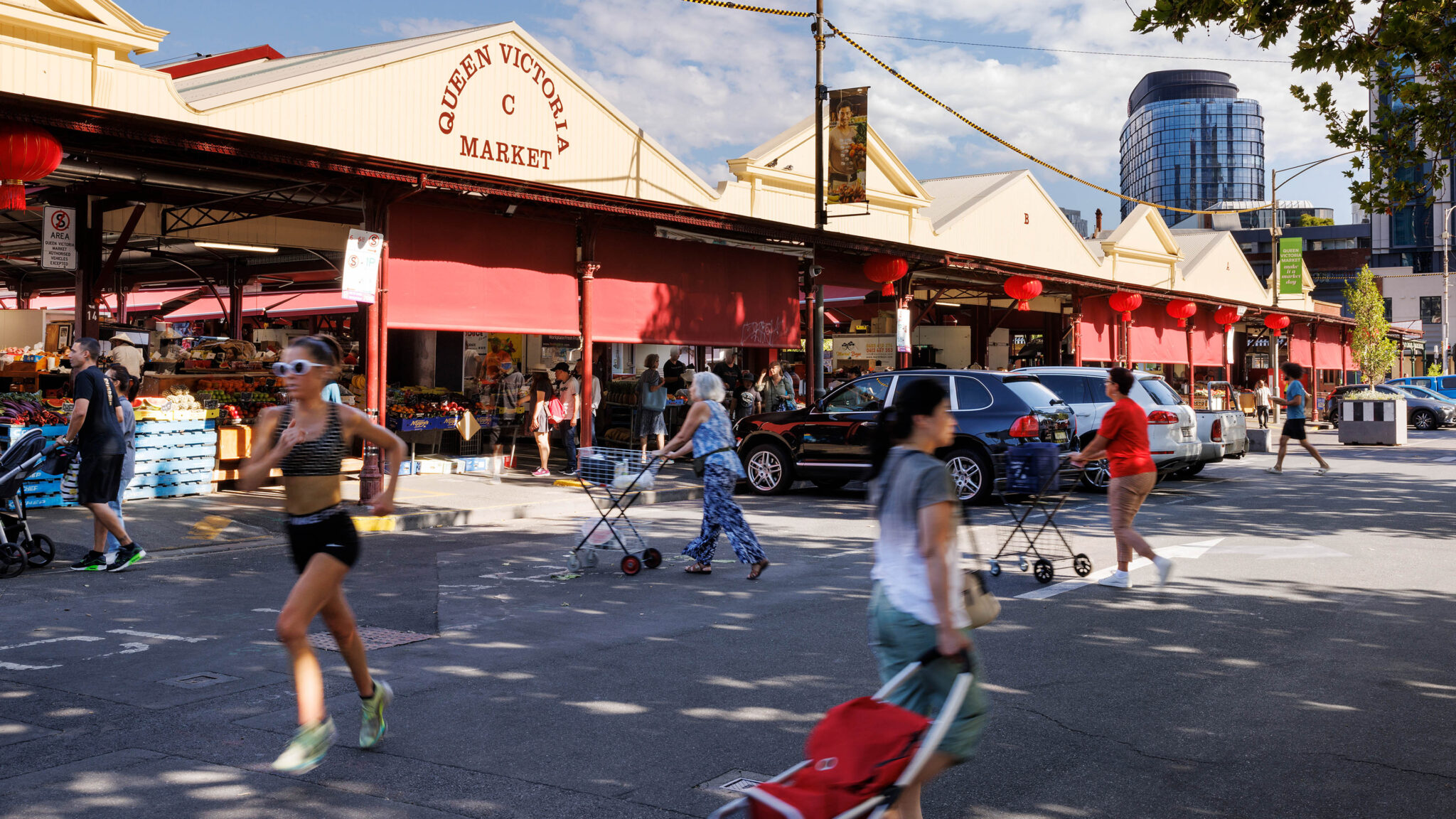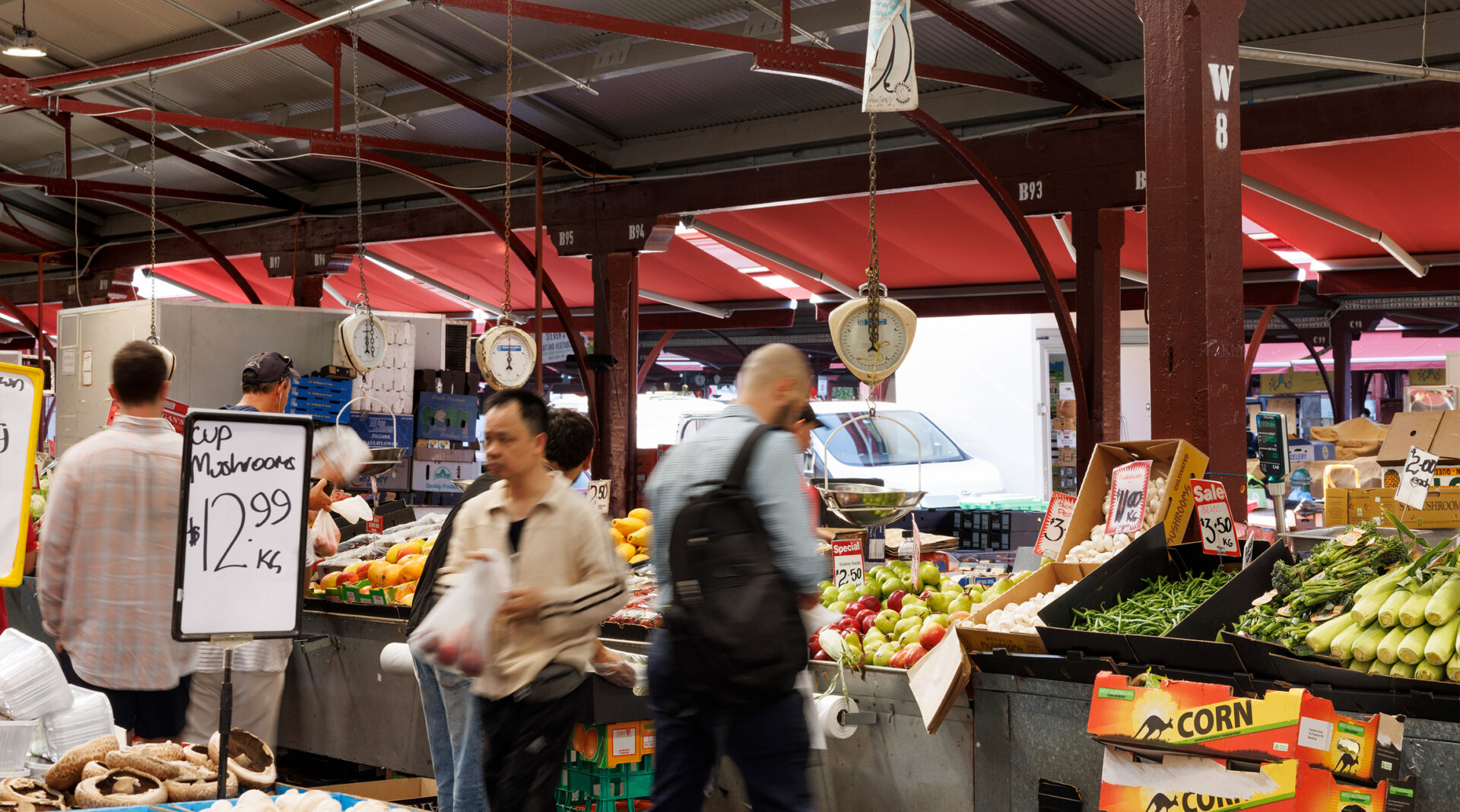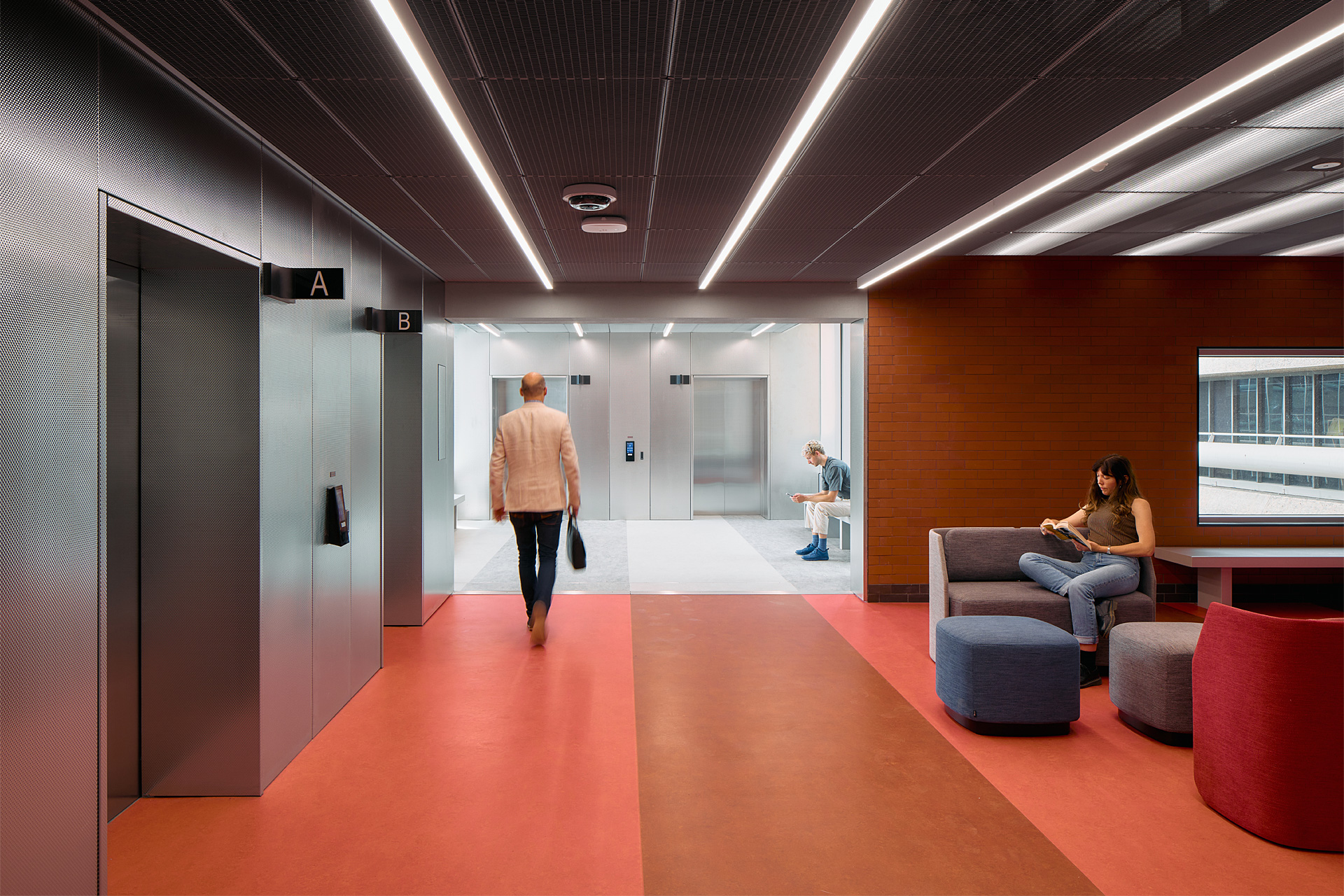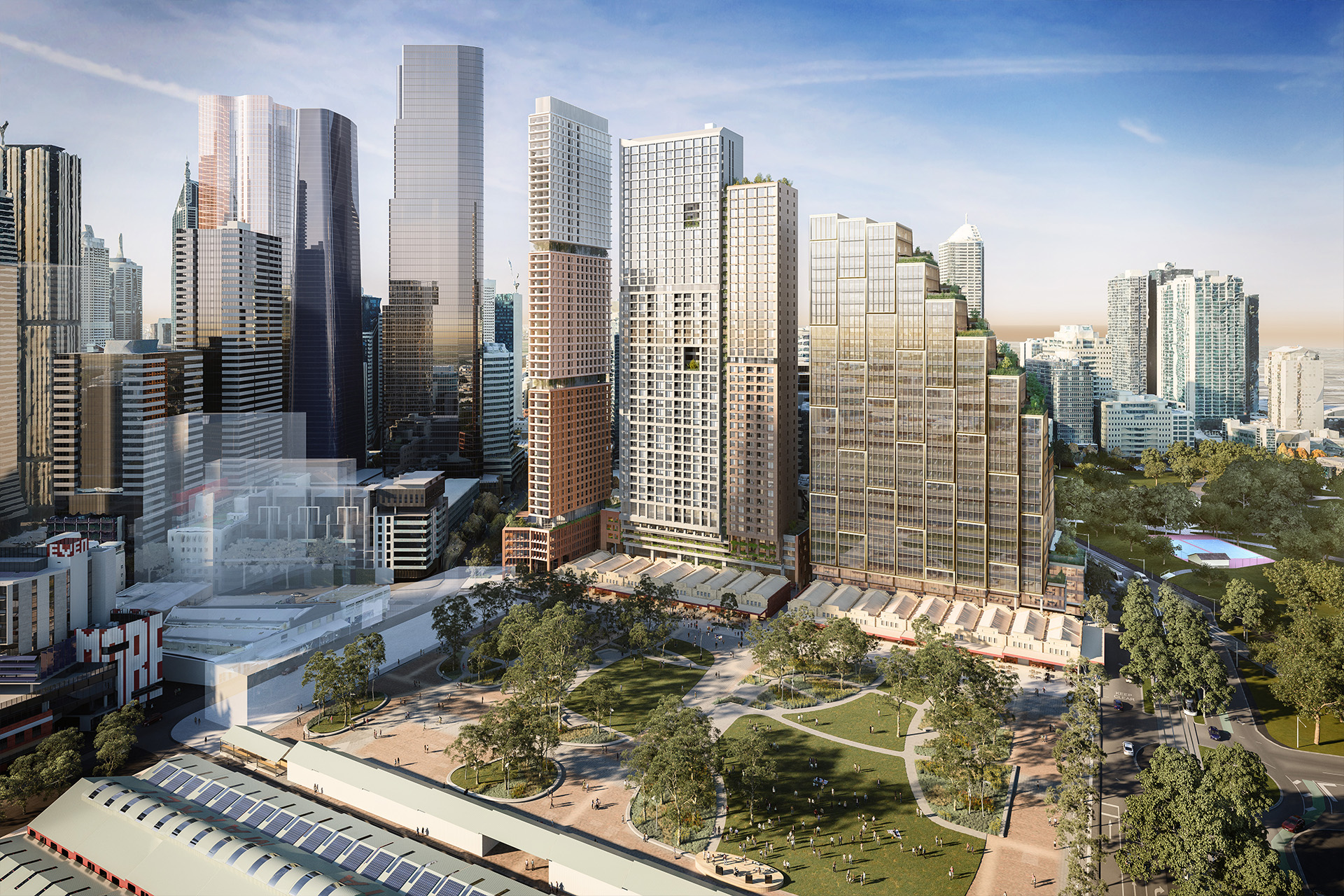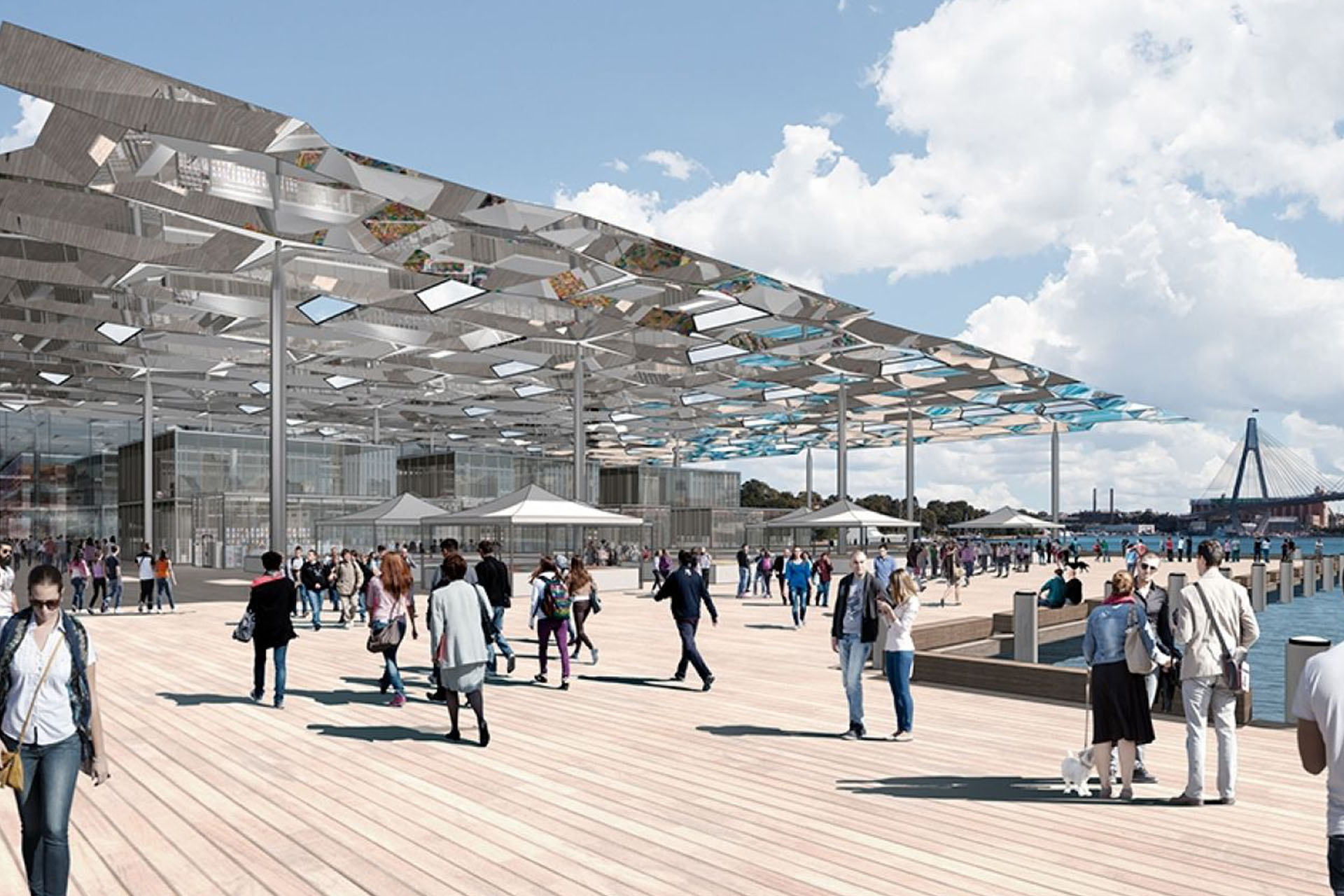The restoration of Queen Victoria Market had a unique brief: a complete overhaul of all structure, services and facilities without altering the design fabric of this iconic, nationally listed landmark.
The sheds have been trading continuously since 1870 and are the most intact example of nineteenth and early twentieth century purpose-built market buildings still in operation in Australia today. For this reason, preserving the historical patina of the open-air sheds was equally as important bringing them up to modern building and commercial standards, ensuring the site’s continued viability and longevity as a functioning and flexible market space.

Stakeholder and public consultation were a key part of developing the brief for this project, NH worked with the City of Melbourne to establish a ‘People’s Panel’ process, allowing traders and the public to respond to proposals and shape the brief directly. Once established, there was comprehensive consultation with Heritage Victoria, the Heritage Council, and traders to finalise project detailing. An additional level of complexity arose from sensitivities and constraints around the site’s historical context as a former cemetery for both Aboriginal and colonial populations.
Structurally, works included a full component-by-component review, repair and refresh of each structural element of the sheds, on-site, ensuring minimal impact to traders. Every beam, truss and bolt were individually removed, repaired or replaced, and reconstructed to appear unchanged. The structure was significantly reinforced to support a new roof that incorporates state of the art insulation, improving overall weather protection and housing a two-hectare solar farm. Prototyped and designed by the project team, this innovative roof system has reduced temperatures inside by up to five degrees during high summer.
In parallel to the structural upgrades, minimising impact to market users was also a focus of the project brief. This included renewal of the services that supply the sheds. Working in close collaboration with the project engineering team and heritage consultants, Trethowan, the services have been designed to integrate seamlessly with the structure, remaining largely unseen in underground trenches.
Other significant upgrades to services include the independent supply of hot and cold water and waste to each trader, access to the power generated by the site’s solar array, and upgrades to the entire site’s waste disposal, storage, and collection systems. The master waste management strategy for the precinct prioritises the separation of waste materials. Further development works will aim for a landfill diversion rate of at least 85 percent, with the ultimate operational target being zero waste to landfill.

The open-air typology of the sheds lends itself to being inherently flexible. However, over the 150 years of its operation, technological advancements have meant that the market infrastructure was unsuitable for many types of installations and events. This restoration allows for a greater variety of programs as well as more diverse beverage market offerings. This will allow the site even more flexibility as well as improving the markets intrinsic and intangible value, ensuring it will continue to thrive for the foreseeable future.




